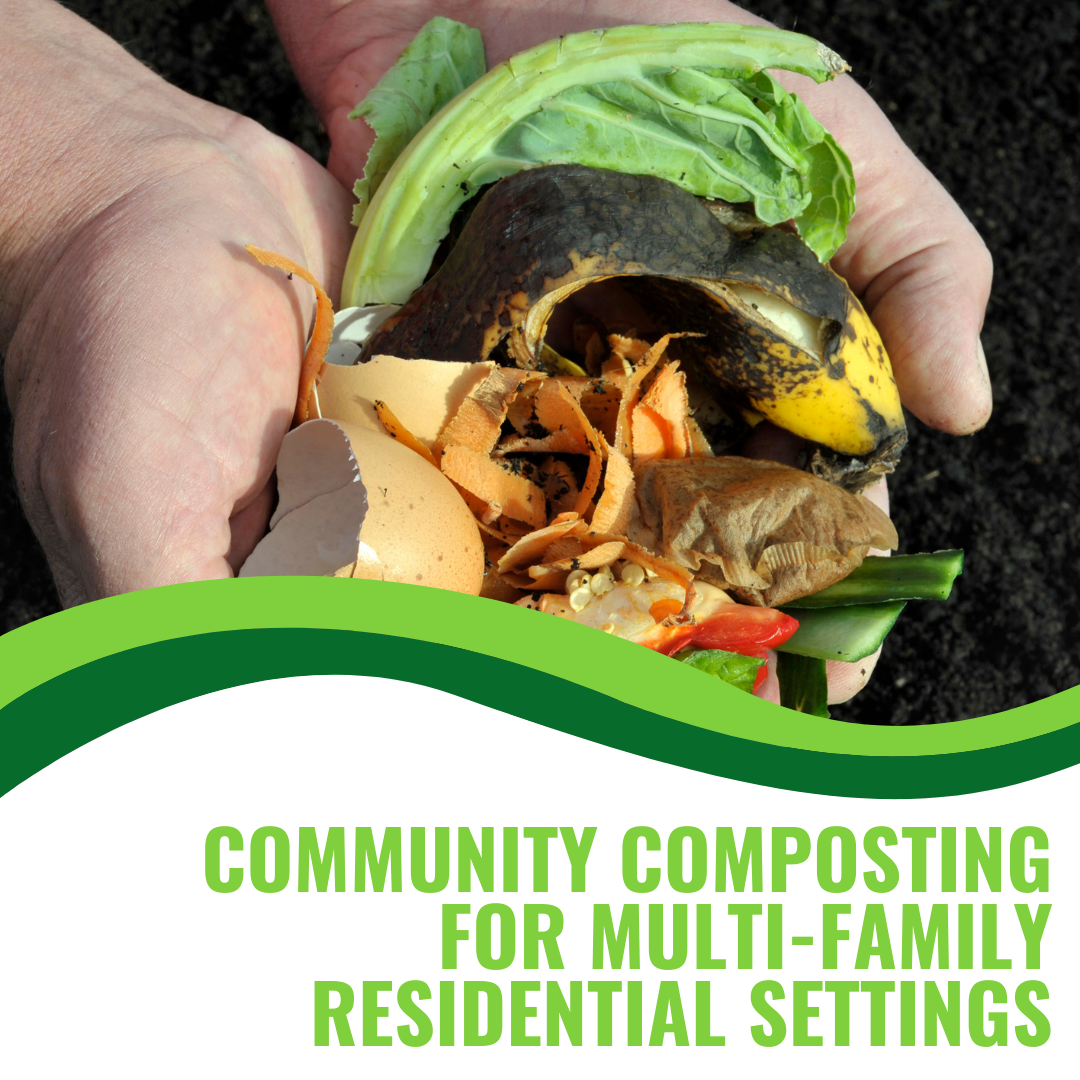We use cookies to make your experience better. To comply with the new e-Privacy directive, we need to ask for your consent to set the cookies. Learn more.
Community Composting for Multi-Family Residential Settings
Community composting provides significant environmental and financial benefits. By diverting waste from landfills and turning it into fertile soil, communities can save money and sustain gardening efforts. This collective project can take place across a whole city, or within a smaller group. People who occupy multi-family communities, whether that's a senior living facility, a university, an apartment complex, or even an office complex, have a unique opportunity to try community composting in their own backyards.

Composting Basics
We've all heard the term, but just about a quarter of Americans actually compost, so let's go over the basics. Composting involves combining three basic ingredients: carbon-rich browns, nitrogen-rich greens, and water. Browns include dead leaves, twigs, newspapers (except glossy pages), and eggshells. Greens include coffee grounds, fruit and vegetable scraps, and grass clippings. Combining the greens and browns with a little water allows these organic materials to break down into a highly fertile soil.
The Benefits of Composting: Economic, Environmental, and Social
According to the Environmental Protection Agency (EPA), 20 to 30 percent of what Americans throw away could be composted. This includes food scraps, coffee grounds, newspapers, and yard waste. When communities divert these materials from a landfill, they can benefit immediately by paying less for waste management. They also create valuable fertilizer out of waste.
In addition to these financial benefits, there's also a tremendous environmental benefit. There's the obvious advantage of keeping food scraps in a closed loop from the table to compost to the garden and back to the table. Turning scraps into soil reduces the amount of energy used to haul scraps to a landfill and haul soil or mulch from a supply store to the community.
There's a lesser known environmental advantage to composting that may trump all of those benefits. When organic waste is buried in a landfill, it goes through a process called anaerobic decomposition because it lacks oxygen. This process creates methane, which is a potent greenhouse gas. Composting uses aerobic decomposition, which creates fertile soil and carbon dioxide instead of methane. Carbon dioxide is also a greenhouse gas, but it is around 25 times less potent than methane, making it preferable in this case.
How to Get Started
There are many guides that help communities get started on composting. The US Composting Council is a great place to get started with resources and local assistance by state. The most essential supplies are collection containers — depending on the nature of the collection point these could be as small as gallon-sized pails for households or as large as 32-gallon carts for cafeterias or kitchens.
For larger collection containers, using proper dumping equipment is essential. Bin Dumpers can quickly and safely lift and tip large wheelie bins, protecting volunteers or workers from injuries.
There are a number of options for the composting site. Windrows or aerated static piles are a popular method for larger communities that generate higher volumes of compostable waste. Another popular option for community composting is the three-bin system: one bin for new compost, one bin for finished compost, and one bin to turn the new/in-progress compost. This is simple to build and allows a continuous and orderly flow of compost.
For smaller operations, a simple tumbler may be sufficient. These can be purchased or built relatively easily. A great educational option for small schools is vermicomposting. In this method, worms break down food scraps into a black, nutrient-rich soil.
Whichever method you choose, your operation will help reduce greenhouse gas emissions and produce valuable soil. The act of creating these programs also builds a stronger sense of community. Once compost is created, there is the potential to use it for landscaping projects or community gardening (which in turn, creates cheaper, more sustainable food). Many communities already enjoy the benefits of composting, and yours could too.
References:
"Aerated (Turned) Windrow Composting." EPA. U.S. Environmental Protection Agency, 29 Aug. 2016. Web. 20 Feb. 2018.
Aslam, Danielle. "The Science Behind In-Vessel Composting." CalRecycle. California Department of Resources Recycling and Recovery, n.d. PDF. 20 Feb. 2018.
"Composting at Home." EPA. U.S. Environmental Protection Agency, 20 Mar. 2017. Web. 20 Feb. 2018.
Paul, John. "Continuous Aerated Windrow Composting." CompostingCouncil. U.S. Composting Council, 2011. PDF. 20 Feb. 2018.
